Independence, MO Pollen and Allergy Report for Summer 2023
Pollen Allergy Trends in Independence, MO
When is pollen lowest in Independence, MO?

February
Lowest month total PPM
Avg. PPM
When is pollen highest in Independence, MO?

April
Highest month total PPM
Avg. PPM
How does pollen in Independence, MO compare to Missouri?
Independence has a higher average PPM than the state of Missouri.
Independence yearly avg PPM:
Missouri yearly avg PPM:
How does pollen in Independence, MO compare to the USA?
Independence has a higher average PPM than the USA.
Independence yearly avg PPM:
USA yearly avg PPM:
Is pollen worse this year in Independence, MO?
Spring 2023 was worse than spring 2022.
Spring 2023 PPM:
Spring 2022 PPM:
Average PPM in Independence, MO
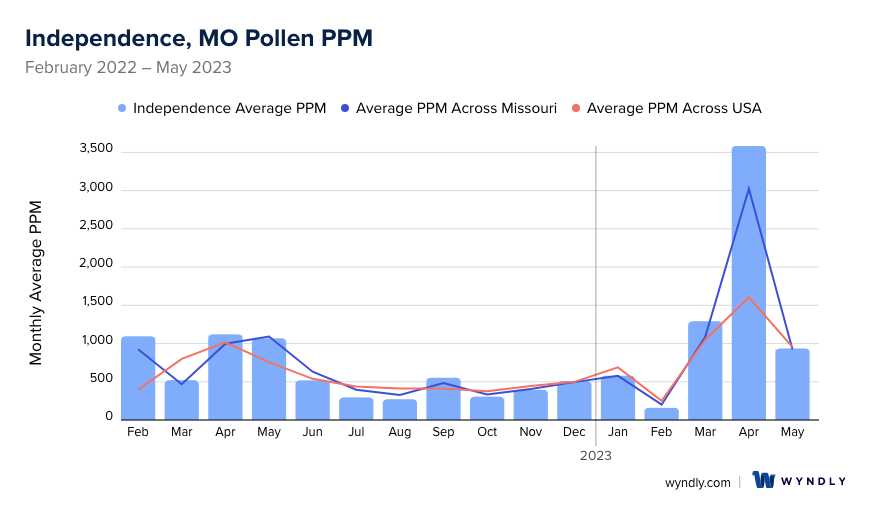
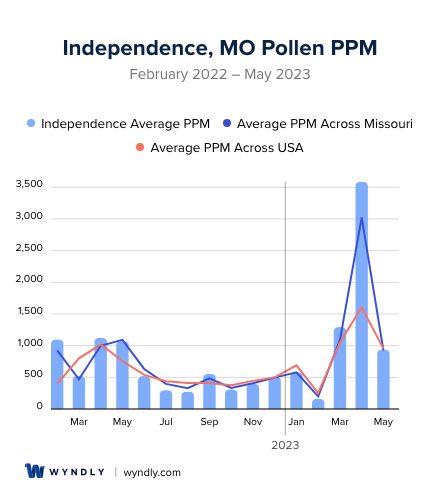
Independence, MO Pollen and Allergy Breakdown by Month
Grass
When is grass pollen highest in Independence, MO?
February has the highest grass pollen in Independence, MO with an average PPM of
When is grass pollen lowest in Independence, MO?
November has the lowest grass pollen in Independence, MO with an average PPM of
Tree
When is tree pollen highest in Independence, MO?
April has the highest tree pollen in Independence, MO with an average PPM of
When is tree pollen lowest in Independence, MO?
October has the lowest tree pollen in Independence, MO with an average PPM of
Weed
When is weed pollen highest in Independence, MO?
April has the highest weed pollen in Independence, MO with an average PPM of
When is weed pollen lowest in Independence, MO?
February has the lowest weed pollen in Independence, MO with an average PPM of
Independence, MO Pollen Monthly Breakdown by Pollen Type
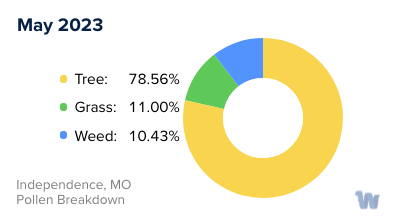
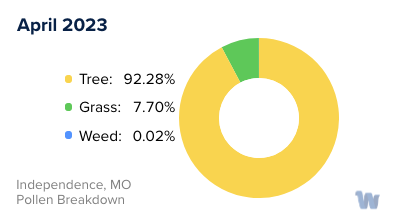
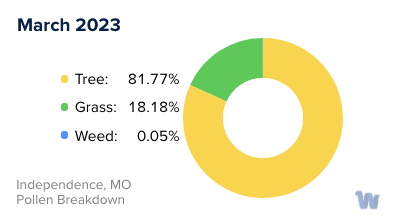
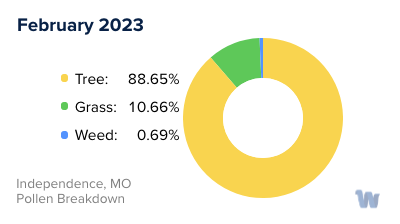
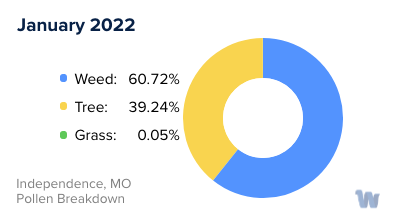
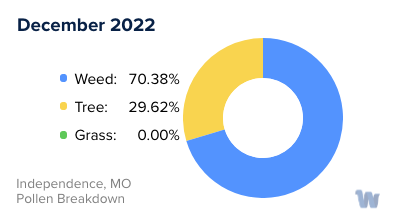
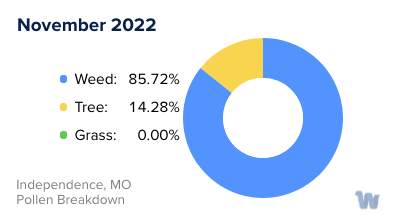
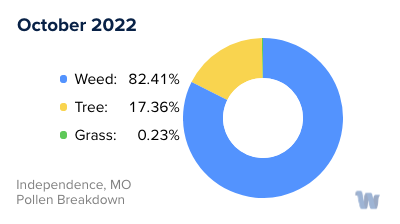
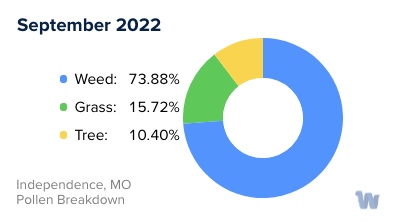
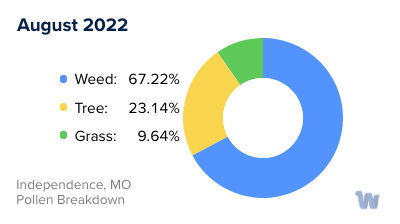
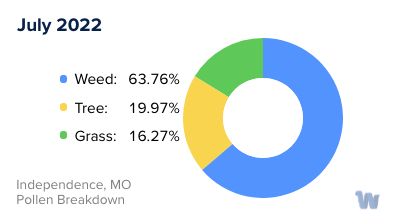
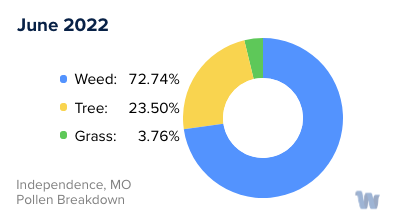
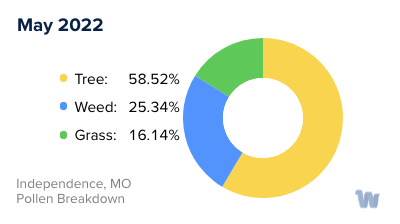
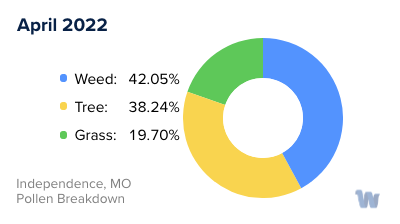
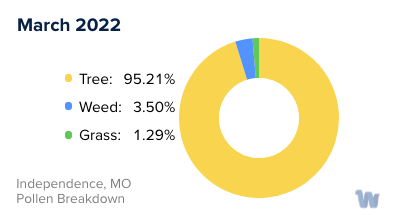
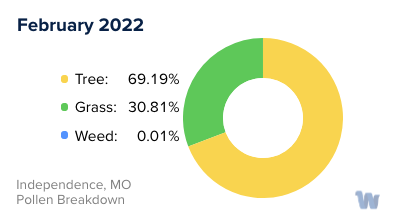
Pollen and Hay Fever in Independence, MO
In Independence, Missouri, residents are all too familiar with the symptoms of pollen allergies and hay fever. These symptoms can be triggered by various types of pollen that are prevalent in the area, primarily tree pollen.
The onset of symptoms is not random, but follows the seasons, as different plants release their pollen at different times of the year. In Independence, the tree pollen season typically begins as early as mid-March, with Red Cedar and Maple trees being among the first to release their pollen.
As the spring season progresses, a variety of other trees join in, each contributing to the overall pollen count. In April, this includes species such as Birch, Cottonwood, Hackberry, Mulberry, Sycamore, Willow, and Sweetgum. May sees the addition of Ash, Beech, Hickory, Pecan, Walnut, Linden, Oak, and Pine, among others.
While the tree pollen season begins to taper off in June, grasses take over as the primary pollen producers. From May through June, Timothy, Orchard, Kentucky Bluegrass, Red Tops, Sweet Vernal, Meadow, Fescue, Perennial Rye, Bermuda, Brome, Velvet, Johnson, and Bahia are among the grasses that begin to release their pollen.
However, it's not just tree and grass pollen that Independence residents need to be aware of. From May through July, English Plantain, Sheep Sorrel, and Yellow Dock add to the mix. Finally, in the late summer and fall, from August through October, the air can be filled with pollen from plants such as Ragweed, Lambs Quarters, Cocklebur, Marsh Elder, Fireweed, Mugwort, Russian Thistle, and Pigweed.
These varying types of pollen, and their different seasons of release, contribute to the prevalence of pollen allergies and hay fever in Independence. By understanding the sources and timing of these allergens, individuals can better anticipate when they might experience symptoms, helping them to navigate and manage their allergies throughout the year.

